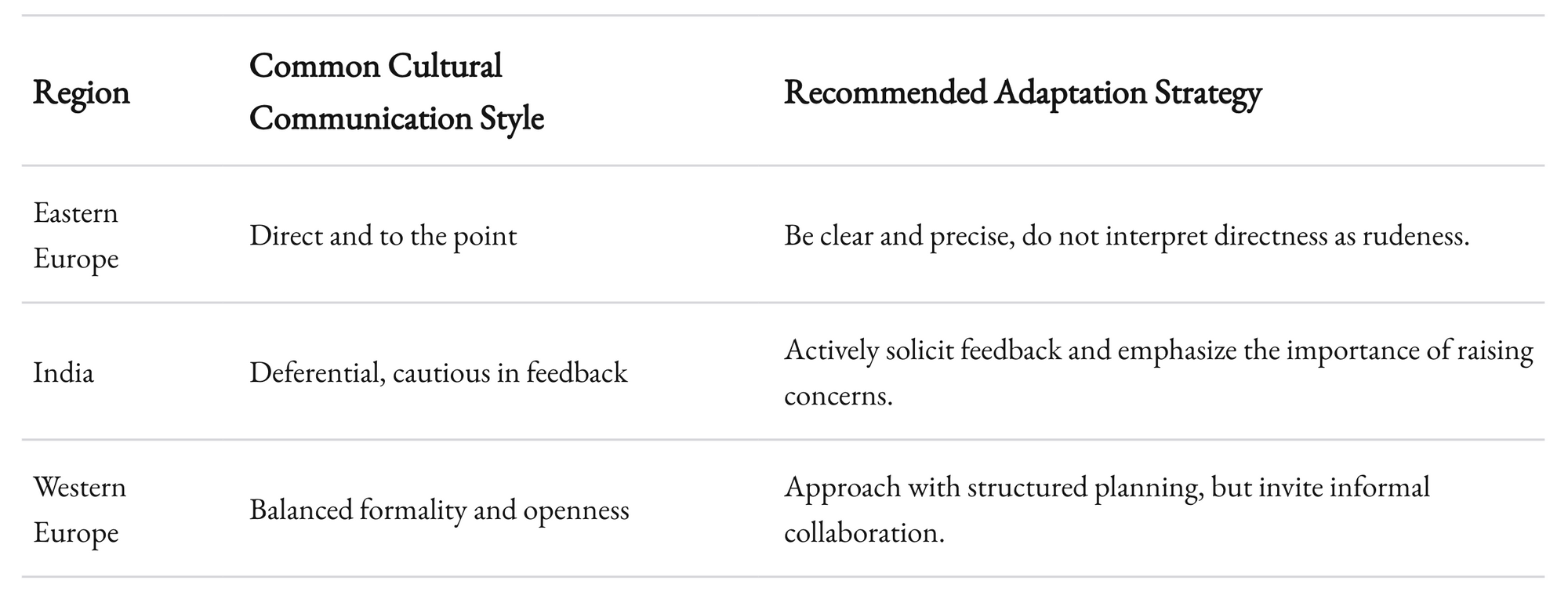How Can We Effectively Communicate Our Vision to a Third-Party Development Team?
Turn your abstract ideas into a shared mission with a third-party dev team-learn how to communicate effectively.

You’ve got a vision. It’s sharp, ambitious, maybe even game-changing. But translating that vision to a third-party development team? Now, that can be a different story. You’re dealing with the challenge of conveying abstract ideas, deeply rooted business needs, and that vague feeling of “you’ll know it when you see it”—to a group of highly technical minds who may not be steeped in your industry like you are.
If you’ve been in the trenches of development projects, you know this gap all too well. Miscommunication leads to misalignment. Misalignment leads to products that don’t work, don’t ship, or worse—don’t solve your user’s needs. I’ve seen it happen, and it’s painful for everyone.
The good news? It’s a solvable problem. In fact, there’s a process to it—a mix of art and science. Let’s break down how you can effectively communicate your vision, translating that spark of an idea into a shared mission that’s as clear to your developers as it is to you.

1. Clarity Above All Else
Let’s be clear about one thing: clarity is king. As business leaders, we often think in big, sweeping ideas. A grand vision for how things could or should be. But for a development team, that grand vision needs to be translated into exact terms.

Consider this: a survey conducted by Geneca found that 80% of software development projects start without a clear understanding of business objectives. Eighty percent! Imagine if construction workers started building a skyscraper based on, “We want it to look... you know, tall, sleek, modern.” The result would be chaotic at best, disastrous at worst. It’s no different for software.
To communicate effectively, paint a clear picture. Break down your vision into small, understandable parts. Instead of saying, “We want a user-friendly experience,” try being specific: “Our users should be able to create an account within three steps, and the interface should have no more than five primary buttons on any screen.” The specificity here turns an idea into something actionable.
Focus on outcomes. “Our users need to feel safe while inputting their payment information” is clearer when you turn it into technical requirements like “Integrate PCI-DSS compliant payment gateways, use two-factor authentication, and ensure all connections are encrypted.” Speak their language—not in the sense of coding but in terms of end goals translated into measurable steps.

2. Use Real-Life User Stories
Developers are problem-solvers. And the best problems are real ones—the ones your users face every day. Imagine telling a story instead of describing a feature list.
For instance, don’t just say, “We need a search feature.” Frame it as a user story: “Our primary users are busy parents trying to quickly find healthy recipes for their kids. They’re usually searching while cooking, often with one hand occupied. The search feature should be voice-activated and prioritize results from saved favorites.”

This kind of narrative helps developers understand the “why” behind your request. It humanizes the problem. A third-party development team, especially one working remotely and possibly juggling multiple clients, might not know your end users as intimately as you do. By painting a vivid picture of those end users, you make the problems they face come alive, helping the developers to care about and own the solution.
User stories make it easier for developers to empathize, to “get” your vision on an emotional level—which is, after all, how all great solutions start. We’re all building for people, even if those people are buried under layers of abstraction.

3. Avoid Assumptions, Especially About the Details
Here’s a quick story. A client once said to me, “It’s obvious… they should know that.” But ‘obvious’ is often the biggest pitfall in project management. Something that seems clear to you may not be clear to your developers, and the gulf in understanding can be surprisingly wide.
Assumptions are vision-killers. You might assume that developers know your industry nuances, or you might skip over context that seems like common sense. For example, a fintech startup assumed the developers knew that “next-day settlement” was critical to their platform. The developers, unaware of this industry-specific nuance, designed a system with a longer processing time. The client ended up with a functional product—but one that didn’t meet the core business need.
Combat this by over-communicating. Document your requirements. Hold sessions to clarify terms. Spell out industry-specific details, even if they feel basic. If you think, “They probably already know this,” stop and share it anyway. The goal is to overexplain now, so you don’t have to fix misunderstandings later.

4. Visual Aids and Prototypes
Words can be slippery, no matter how precise you try to be. That’s why visuals—sketches, wireframes, diagrams, and prototypes—are incredibly valuable when working with a third-party development team. A picture really can be worth a thousand words.

Think about using a basic tool like Figma for mockups, even if you’re not a designer. Or consider a flowchart made in Lucidchart to explain how different parts of your system interact. A simple whiteboard sketch photographed and shared can convey complex relationships far more clearly than paragraphs of explanation.
Moreover, consider building an interactive prototype. Tools like InVision or even Adobe XD allow you to create clickable prototypes that give a development team a better sense of user flow. A prototype is tangible. Developers can play with it, click through screens, and see for themselves what you have in mind.

5. Set Clear Milestones and KPIs for Success
It’s all too easy to get lost in the woods during a project. A strong vision needs landmarks—clear milestones that everyone can use to measure progress.
Define Key Performance Indicators (KPIs) upfront. Are we talking about feature completion rates? Maybe the goal is that your beta version supports 1,000 concurrent users without crashing. Are we measuring user satisfaction post-launch, aiming for a net promoter score (NPS) of 50 or higher? These metrics should be shared and agreed upon before the development even begins.
With outsourced teams, the milestones serve as a rallying point. It keeps everyone—your business stakeholders and the developers—aligned, pulling in the same direction. It’s like giving a roadmap for your journey: “At mile marker 5, we should be here. At mile marker 10, we’ll assess again.”
Avoid vague milestones like “UI is complete.” Instead, go for specifics: “All core UI components are in place, including user profile, settings, dashboard, and help sections, and reviewed by at least two internal stakeholders.” You’re less likely to run into confusion when expectations are made explicit.

6. Regular Check-ins and Two-Way Communication
Let’s face it—distance can be a killer in third-party engagements. Regular check-ins are the glue that keeps the team aligned with your vision. Weekly stand-ups, bi-weekly retrospectives, or even a simple Monday morning status update via Slack or Zoom can make all the difference.
But here's the kicker: these communications need to be two-way. Your development team will have their own insights, questions, and concerns—things that, if left unspoken, could derail progress. Foster an environment where it’s not just you communicating downwards. Encourage questions, welcome feedback, and address roadblocks as soon as they arise.
Remember, development is iterative. The more feedback loops you can build into the process, the closer the end result will be to your original vision. And if your vision evolves—which it almost inevitably will—these check-ins give you the opportunity to pivot without losing momentum.

7. Document Everything
Building software is like building a house—plans change, and you’ve got to keep track of it all. Start with a living specification. Think of it as the beating heart of your vision, always up-to-date, reflecting current requirements and changes as they happen.
This can be as formal or informal as needed. Tools like Confluence, Notion, or even a shared Google Doc can act as your living spec. The point is to create a single source of truth that’s accessible to everyone. Something that doesn’t get lost in email threads or buried in old Slack messages.
When a new feature is added, document it. When there’s a change in business priority, note it. And make sure this document is open to the development team—it should be something they can reference, contribute to, and rely on to ensure they’re always up to date.

8. Cultural Context Matters
Finally, one aspect that’s often overlooked is cultural context. If you’re working with a team based in a different country, it’s worth spending time on understanding their working culture, holidays, and communication norms.

For example, if you’re working with a team in Eastern Europe, they might have a more direct communication style, which can come off as abrupt if you’re not expecting it. A team in India might be more deferential, which can lead to hesitancy in voicing concerns unless prompted directly.
These are broad strokes, of course, but the principle stands: awareness of cultural norms helps in creating a working relationship built on mutual understanding and respect. It’s much easier to bridge gaps when you understand where those gaps are coming from in the first place.
Bringing Your Vision to Life
Communicating a vision isn’t easy. It’s about clarity, storytelling, avoiding assumptions, and creating concrete, measurable milestones. It’s about making the abstract real for your development team so they can share your dream, not just execute your orders.
This is the real trick—turning the spark you have into a shared fire. When your development team feels like a partner rather than a hired hand, you’re no longer trying to communicate a vision—you’re all building it together.
Because, in the end, the most successful software projects are those where the entire team, from founders to the developers, are all on the same page. They share the same vision, speak the same language, and most importantly, are working towards the same goal—a product that users love.
So the next time you’re kicking off a project, pause and ask yourself: Have I painted my vision clearly enough that it’s become our vision? If not, it’s time to pull up a chair, open that shared document, and make it real.



